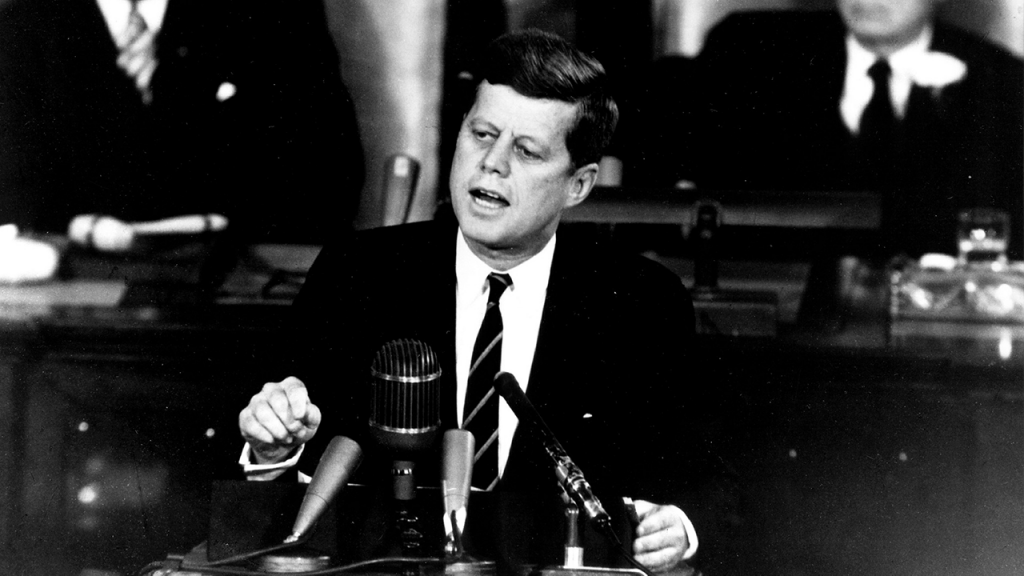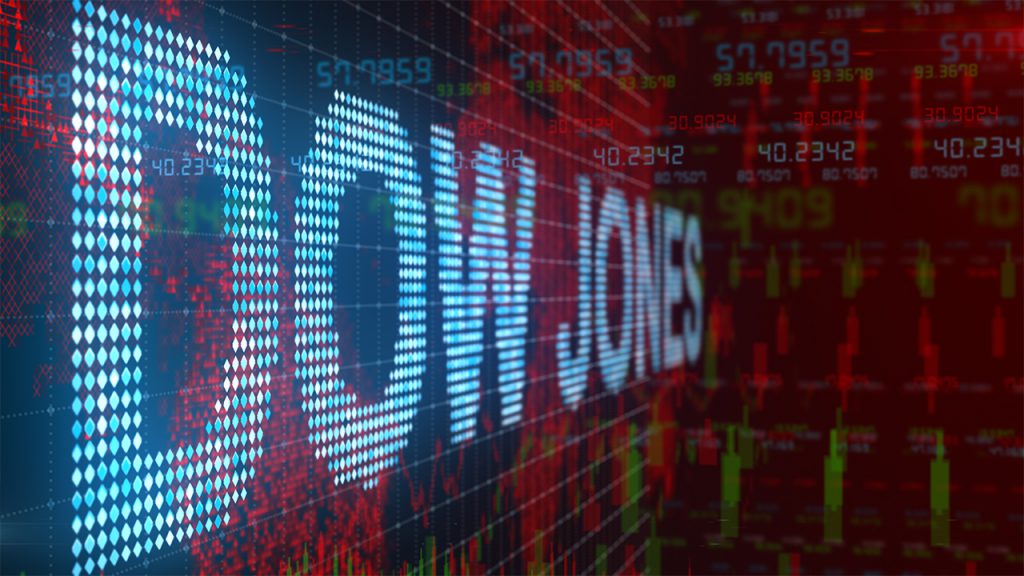 Fifty years ago, John F. Kennedy was assassinated on Friday, November 22, 1963 in Dallas, Texas. The assassination not only shocked the nation, but shook the stock market as well. However, very few people have heard about The Great Salad Oil Swindle which nearly crippled the New York Stock Exchange that weekend. Officials at the NYSE took advantage of the closure of the exchange to keep the crisis caused by the swindle from spreading further. Here is what happened at the NYSE while the nation focused on the President’s funeral.
Fifty years ago, John F. Kennedy was assassinated on Friday, November 22, 1963 in Dallas, Texas. The assassination not only shocked the nation, but shook the stock market as well. However, very few people have heard about The Great Salad Oil Swindle which nearly crippled the New York Stock Exchange that weekend. Officials at the NYSE took advantage of the closure of the exchange to keep the crisis caused by the swindle from spreading further. Here is what happened at the NYSE while the nation focused on the President’s funeral.
Salad Oil, Cornered and Quartered
The Great Salad Oil Swindle was carried out by Anthony “Tino” De Angelis, who traded vegetable oil (soybean oil) futures which was an important ingredient in salad oil. De Angelis had previously been involved in a swindle involving the National School Lunch Act while he President of the Adolph Gobel Co. When it was discovered that he had overcharged the government and delivered over 2 million pounds of uninspected meat, he and the company ended up bankrupt. Con-men don’t stop being cons, they just try to learn from their mistakes and make more money the next time around.
Tino de Angelis had learned that government programs were a way to make easy money, so he started the Allied Crude Vegetable Oil Refining Co. in 1955 to take advantage of the U.S. Government’s Food for Peace program. The goal of the program was to sell surplus goods to Europe at low prices. Initially, De Angelis sold massive quantities of shortening and other vegetable oil products to Europe, and when this worked, he expanded into cotton and soybeans.
By 1962, De Angelis was a large enough player in commodity markets that he thought he could corner the soybean oil market, allowing him to make even more money. Always the schemer, De Angelis’s plan was to use his large inventories of commodities as collateral to get loans from Wall Street bank and finance companies.
No Salad Today
When De Angelis got a large order from Spain, he started speculating in the futures market to increase his profits, but when the order was reversed, he decided to prop up the market rather than cut his losses. De Angelis pulled out all the stops. He forged warehouse certificates, stole warehouse certificates, kited checks and warehouse certificates, opened a new brokerage account at Ira Haupt & Co., and even attempted to bribe employees of other companies. You can’t hold up the market forever. Eventually, the whole house of cards collapsed. Inspectors were eventually tipped off about De Angelis’s fraud. Allied Crude was supposed to have $150 million in vegetable oil as collateral, but only had $6 million. When the inspectors found water in the tanks, and not oil, the gig was up. The futures market crashed. Soybean oil closed at $9.875 on Friday, November 15, at $9 on Monday and $7.75 on Tuesday, November 19, wiping out the entire value of the De Angelis loans. As you might guess, De Angelis’s company had been losing money all along, and the loans were used to cover these mounting losses. De Angelis’s goal was to sell out at the top and cover all of his losses, but of course, his plan didn’t work out that way. The crash of the soybean oil market in November 1963 is shown below.
On November 19, the Allied Crude Vegetable Oil Refining Co. filed for bankruptcy. No one should be surprised that millions of dollars were never accounted for. Fifty-one companies were stuck with bad loans from Allied Crude. Two of the brokerage houses whom De Angelis had used, Williston & Beane and Ira Haupt & Co. (which had been part of the famous Park & Tilford Distillers Corp. whiskey dividend scandal of 1946) were suspended from trading by the NYSE. These brokerages’ customers became desperate because they didn’t know if they would get back the money in their accounts.
A Nation Shocked, a Market Shaken
11/22/1963
10:00 AM
733.35
11/22/1963
11:00 AM
733.61
1.46
11/22/1963
12:00 PM
732.78
1.3
11/22/1963
1:00 PM
735.87
0.86
11/22/1963
2:00 PM
730.18
0.81
11/22/1963
2:07 PM
711.49
2.2
11/26/1963
10:00 AM
738.43
11/26/1963
11:00 AM
721.96
2.04
11/26/1963
12:00 PM
727.92
1.94
11/26/1963
1:00 PM
734.91
1.49
11/26/1963
2:00 PM
735.17
1.06
11/26/1963
3:00 PM
741.26
1.26
11/26/1963
3:30 PM
743.52
1.53
The closure of the NYSE gave the exchange some breathing space to address the problems De Angelis had created. If the NYSE didn’t resolve this problem, not only would the collapse discourage investment by small investors, but the U.S. Securities and Exchange Commission would intervene, reducing the NYSE’s power. The NYSE solved the problem by imposing a $12 million assessment on exchange members and used the money to make Ira Haupt & Co.’s customers whole. Creditors were not as lucky. American Express and other lenders lost millions. For the first time, the NYSE had assumed responsibility for a member firm’s failure. When the stock market reopened on Tuesday, it quickly recovered and moved up for the rest of the year.
Warren Buffett Gets a Ten-Bagger
And what about Warren Buffett? As a result of the losses American Express suffered from funding De Angelis, American Express stock, fell in price from 65 in October 1963 to 37 in January 1964. Believing this was temporary, Warren Buffett began buying shares and established a 5% stake in American Express for $20 million. As indicated by the chart below, American Express made a ten-fold move between 1964 to 1973, marking one of his earliest windfalls. Invest $1 in 1948 and have $48,000 today! With the recent IPOs of Twitter and Facebook, two of the largest social/entertainment media giants, one would imagine that investing in those companies would pay big compared to the Walt Disney Co. However, the Walt Disney Co. outperformed them both by comparison in its day, and did it with an interesting story to tell.
Today, employees and venture capitalists reap most of the benefits before the company IPOs on the New York Stock Exchange (NYSE) or NASDAQ , but it wasn’t always this way. In the past, most companies traded ov
Invest $1 in 1948 and have $48,000 today! With the recent IPOs of Twitter and Facebook, two of the largest social/entertainment media giants, one would imagine that investing in those companies would pay big compared to the Walt Disney Co. However, the Walt Disney Co. outperformed them both by comparison in its day, and did it with an interesting story to tell.
Today, employees and venture capitalists reap most of the benefits before the company IPOs on the New York Stock Exchange (NYSE) or NASDAQ , but it wasn’t always this way. In the past, most companies traded ov
Disney Trades on the OTC in 1946
Walt Disney Productions incorporated in 1938. The company issued its 6% Cumulative Convertible Preferred to the public in 1940; its common began trading OTC in 1946; and the company listed on the NYSE on November 12, 1957. If you study the changes Walt Disney made to his eponymous company before it listed on the NYSE, you can see how he primed the company to increase in price and make sure the listing on the NYSE was successful. Walt Disney, his brother Raymond and their wives owned over 25% of the stock. These shares were later put into the Disney Family Voting Trust which held 46.8% of the common stock in 1959. Having such a large ownership of the shares, Walt Disney had every incentive to drive the price up. The Preferred stock was issued at $25, but the company suffered large losses in 1941, caused by the disappointing returns from Pinocchio and Fantasia which were not as successful as Snow White had been. The company failed to meet its preferred dividend in July 1941. The company fell in arrears on the dividend, but since the preferred was cumulative, there was always the chance the company would make up the lost dividends, and they did. Disney restarted the regular dividend in July 1947, and caught up on the $7.50 in arrears in 1948 and in 1949. You can see the impact of this on the preferred stock, which had fallen in price to $3.50 by April 1942, rising to $32.50 by the beginning of 1946 to reflect the expectation of the missed dividends being paid. This is also when the company’s common began trading OTC. The preferred stock, whose chart is provided below, was redeemed on January 1, 1951 at $25 with all dividends paid.Transforming Tomorrowland before Neverland
In the twelve years between 1946, when Disney common started trading OTC, and when it listed on the NYSE on November 12, 1957, Walt Disney introduced numerous innovations that transformed the company and increased its profits. Disney made animated films that had been delayed by the war, such as Alice in Wonderland, Peter Pan and Cinderella. The company began making live action movies with Treasure Island in 1950 and 20,000 Leagues under the Sea in Cinemascope in 1954. For TV, Disney introduced the Disneyland TV show (later Walt Disney’s Wonderful World of Color) in 1954, and the Mickey Mouse Club began production in 1955. Of course, Walt’s greatest innovation was Disneyland, which opened on July 17, 1955 for which Walt Disney hosted a live TV preview with Ronald Reagan and others. Note that all of these events occurred before Walt Disney Productions, as it was known then, listed on the NYSE. In the year before the stock first traded on the NYSE, the company did a 2-for-1 stock split and paid its first dividend on the common stock. One difference between Disney in the 1950s and Facebook or Twitter in the 2010s is that anyone could have bought the stock OTC before it listed on the NYSE. The stock wasn’t restricted to employees and venture capitalists. Anyone who went to Disneyland in 1955, watched the Mickey Mouse Club or the Disneyland TV show, or saw the movies Disney was releasing could have taken advantage of the company’s growth. The chart below shows how Disney stock performed between 1946 until 1975. The stock traded at 3 in 1949, moved up to 52 by July 1956 before splitting 2-for-1. The stock closed at $13.75 on November 12, 1957 when it debuted on the NYSE, and moved up to $59.50 by April 1959. The stock traded sideways until 1966 when it began another significant move as one of the “Nifty Fifty” stocks of the 1960s, hitting 244 by the beginning of 1973.
The similarities between Walt Disney stock and Facebook or Twitter are striking in many ways. All of the companies had a CEO, Disney, Zuckerberg or Costello who was the driving force behind the company and benefitted immensely from the success of the stock. Each CEO provided innovations that appealed to young people at first, but which could eventually reach a wider audience as well. Their companies developed brand names which were easily recognizable, and they were able to take advantage of the publicity that came their way.
The Happiest Shareholders on Earth
 The Vereenigde Oost-Indische Compagnie (VOC), or the United East India Company, was not only the first multinational corporation to exist, but also probably the largest corporation in size in history. The company existed for almost 200 years from its founding in 1602, when the States-General of the Netherlands granted it a 21-year monopoly over Dutch operations in Asia until its demise in 1796. During those two centuries, the VOC sent almost a million people to Asia, more than the rest of Europe combined. It commanded almost 5000 ships and enjoyed huge profits from its spice trade. The VOC was larger than some countries. In part, because of the VOC, Amsterdam was the financial center of capitalism for two centuries. Not only did the VOC transform the world, but it transformed financial markets as well.
The Vereenigde Oost-Indische Compagnie (VOC), or the United East India Company, was not only the first multinational corporation to exist, but also probably the largest corporation in size in history. The company existed for almost 200 years from its founding in 1602, when the States-General of the Netherlands granted it a 21-year monopoly over Dutch operations in Asia until its demise in 1796. During those two centuries, the VOC sent almost a million people to Asia, more than the rest of Europe combined. It commanded almost 5000 ships and enjoyed huge profits from its spice trade. The VOC was larger than some countries. In part, because of the VOC, Amsterdam was the financial center of capitalism for two centuries. Not only did the VOC transform the world, but it transformed financial markets as well.
As the chart shows, shares started at 100 in 1602, moved up to 200 by 1607, suffered a bear raid in 1609, moved up to the 400 range in the 1630s, fluctuated as the fortune of the company changed from year to year, participated in the bubble of the 1720s when shares exceeded 1000, fell back to 600, rallied to 800 in the1730s, then slowly declined from there. Perhaps, no better indicator of the Dutch economy, or the global economy, prior to 1800 exists.
 The Dow Jones Industrial Average (DJIA) is both the oldest stock index for industrial stocks in the United States and a benchmark for stocks in the United States. When someone says “the market” was up 100 points today, they are referring to the Dow Jones Industrial Average. Most people are unaware of the history of the DJIA and that Global Financial Data’s provides a unique version of the DJIA that extends the series on a daily basis back to 1885 by combining all four versions of the DJIA into a single index, and provides data unavailable from any other data source. Global Financial Data is also the only source that provides data on all the historical components of the DJIA.
The Dow Jones Industrial Average (DJIA) is both the oldest stock index for industrial stocks in the United States and a benchmark for stocks in the United States. When someone says “the market” was up 100 points today, they are referring to the Dow Jones Industrial Average. Most people are unaware of the history of the DJIA and that Global Financial Data’s provides a unique version of the DJIA that extends the series on a daily basis back to 1885 by combining all four versions of the DJIA into a single index, and provides data unavailable from any other data source. Global Financial Data is also the only source that provides data on all the historical components of the DJIA.
The Four Indices
Global Financial Data’s Version of the Dow Jones Industrial Average
GFD’s version of the DJIA includes several adjustments that are unique. First, we have combined the four versions of the DJIA into a single index by introducing adjustment factors when new indices were introduced in 1886, 1896 and 1914. We were able to accurately do this by going back to the New York Times in 1886 and 1896 to calculate the prices of the stocks in the new and the old averages on the day the new index was introduced. Once we found the ratio of stocks in the old and new Industrial indices we used this adjustment factor to chain link the series together.
The Dow Jones Industrial Average is the grandfather of stock market indices with a history stretching back to 1885, providing 125 years of daily data on US stocks. The index has been substantially revised 3 times by changing the number of stocks or components within the index.
GFD provides three unique features to help investors understand the history of the DJIA. First, we provide adjustment factors that enable users to chain link each of these indices together and provide a more complete picture of the DJIA and US stocks over time. By choosing the “Split Adjusted” choice in the Download Tool, the data will automatically adjust for these changes. Second, we have recreated the index during the NYSE’s closure in 1914 to provide our users information on US stocks unavailable anywhere else.


